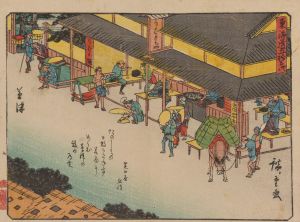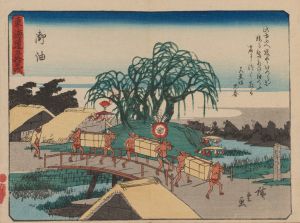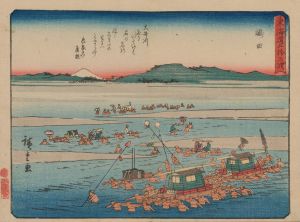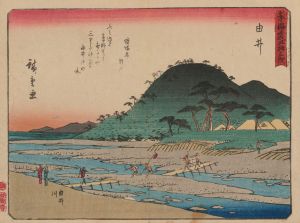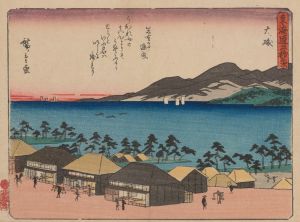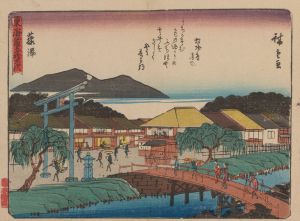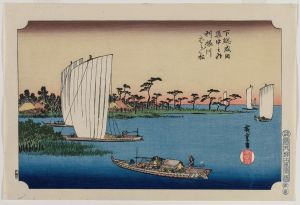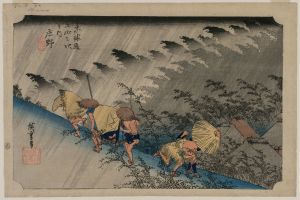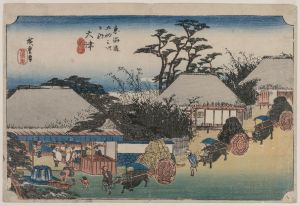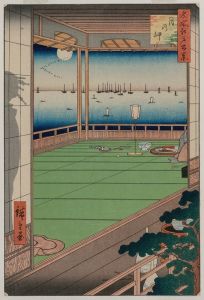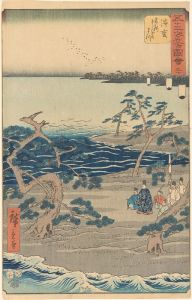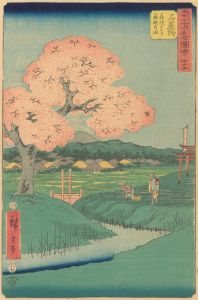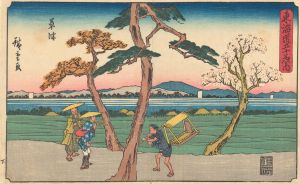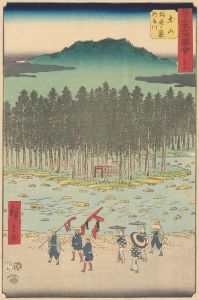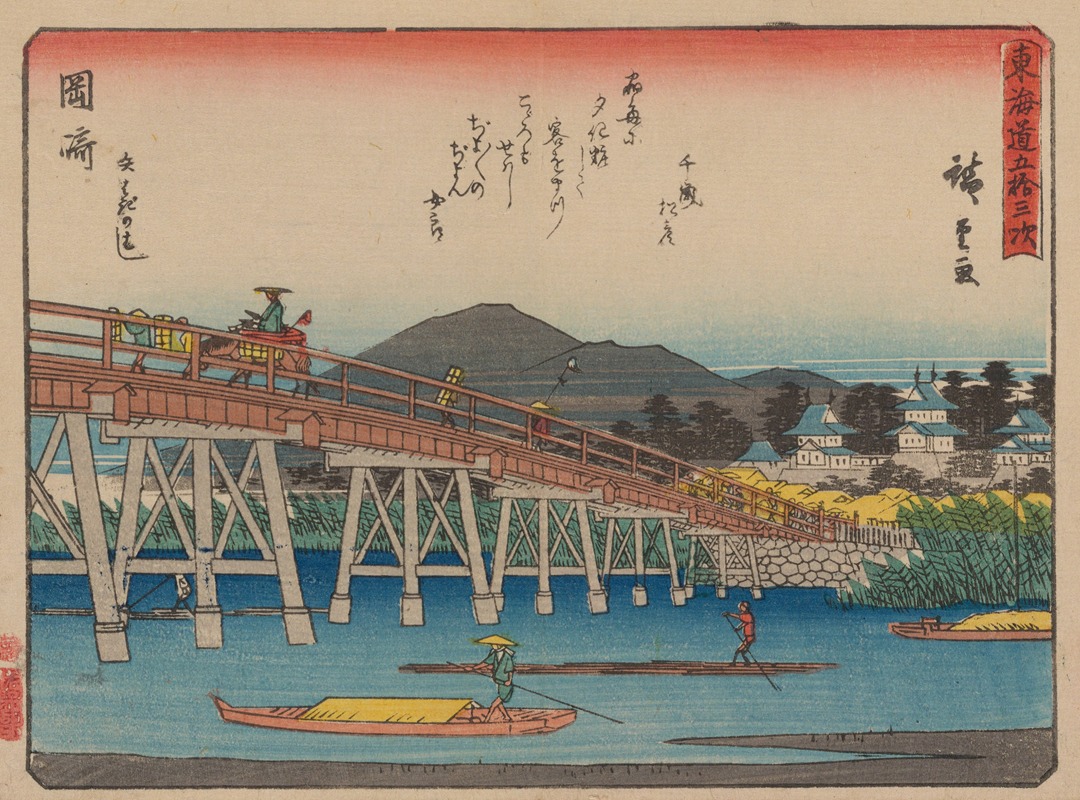
Tokaido gojusantsugi, Pl.39
A hand-painted replica of Andō Hiroshige’s masterpiece Tokaido gojusantsugi, Pl.39, meticulously crafted by professional artists to capture the true essence of the original. Each piece is created with museum-quality canvas and rare mineral pigments, carefully painted by experienced artists with delicate brushstrokes and rich, layered colors to perfectly recreate the texture of the original artwork. Unlike machine-printed reproductions, this hand-painted version brings the painting to life, infused with the artist’s emotions and skill in every stroke. Whether for personal collection or home decoration, it instantly elevates the artistic atmosphere of any space.
Andō Hiroshige, a renowned Japanese ukiyo-e artist of the Edo period, is celebrated for his landscape prints and his significant contribution to the genre. One of his most famous series is "The Fifty-three Stations of the Tōkaidō" (Tōkaidō Gojūsan-tsugi), which depicts the scenic views along the Tōkaidō road, the main route connecting Edo (modern-day Tokyo) to Kyoto. This series, created in the early 1830s, consists of 55 prints, including the starting point, Nihonbashi in Edo, and the terminus, the Sanjō Bridge in Kyoto, along with the 53 stations in between.
Plate 39 of this series is one of these iconic prints, capturing the essence of a specific station along the Tōkaidō. Hiroshige's work is known for its vibrant colors, dynamic compositions, and the ability to convey the atmosphere of the scenes he depicted. His prints often include travelers, local inhabitants, and the natural beauty of Japan, reflecting both the daily life and the cultural landscape of the period.
The Tōkaidō road was an essential travel and trade route during the Edo period, and Hiroshige's series provides a visual journey through the diverse regions of Japan. Each print in the series captures a unique aspect of the station it represents, often highlighting the geographical features, weather conditions, and human activities typical of the area. Hiroshige's keen observation and artistic skill allowed him to create images that are not only aesthetically pleasing but also rich in detail and cultural significance.
Hiroshige's work on "The Fifty-three Stations of the Tōkaidō" was highly influential, both in Japan and internationally. His innovative use of perspective, color, and composition had a lasting impact on the development of landscape art. The series was particularly admired in Europe, where it influenced the Impressionists and other Western artists in the 19th century. Hiroshige's ability to capture the fleeting moments of everyday life and the transient beauty of nature resonated with the artistic movements that valued spontaneity and the depiction of modern life.
The prints from this series, including Plate 39, are considered masterpieces of ukiyo-e and are highly sought after by collectors and art enthusiasts. They offer a glimpse into the historical and cultural context of Japan during the Edo period, providing valuable insights into the country's artistic heritage. Hiroshige's legacy continues to be celebrated, and his works remain an enduring symbol of Japanese art and its influence on the global art scene.
In summary, Andō Hiroshige's Plate 39 from "The Fifty-three Stations of the Tōkaidō" is a testament to his artistic genius and his ability to capture the spirit of Japan's landscapes and people. His work not only documents a significant travel route of the Edo period but also transcends time, offering viewers a timeless connection to the beauty and culture of Japan.





